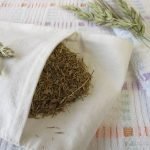The Many Faces of Salvia
Robin DiPasquale, ND, RH(AHG)
The name Salvia is derived from the Latin salvus (safe) or, in terms of health, salvus (well-being). In Italian, salvare is the verb meaning to save; sage is known as the plant that saves. There are more than 900 species worldwide within the Salvia genus of this Lamiaceae family plant. The constituents found in various Salvia species, along with where it grows and who is using it, determine the medicinal actions and toxic effects of each of the plant species. The medicinal support of most, if not all, Salvia species to the nervous system (treating neuralgia pain, sleep disturbances, anxiety states, or other afflictions linked to an imbalance of the nervous system) is known by the people of many cultures around the world using their various local species of sage. Aaron Jenks, PhD,1 researches the use of Salvia species from many areas of the world, including Mexico and Central America, Andean Cordillera, eastern Brazil, the Mediterranean basin, and the Middle East, Asia, and Africa. When using the distilled essential oil of Salvia, some species contain higher amounts of the monoterpenoid ketone thujone (linked to central nervous system action), which can act as a neurotoxin if too much is used. Because of this, the use of sage in medicinal quantities or the essential oil distillation is contraindicated during pregnancy.
Sage is referred to in Maud Grieve’s A Modern Herbal (Harcourt, Brace & Company) as a panacea for healing. Sage directly stimulates the pituitary, adrenals, gonads, and nonspecific immune functions.2 Overall, sage treats the nervous system and influences the endocrine system, and the functioning of all systems of the body is enhanced through this connection. This article will look at just a few of the species of Salvia as they apply medicinally.
Salvia officinalis
In Western herbal medicine, Salvia officinalis is the sage plant most commonly known, and the medicinal actions and applications of S officinalis are numerous. This Western sage contains flavonoids, monoterpenoids, diterpenoids, triterpenes, and tannins, including rosmarinic acid.3,4 These provide the medicinal actions of antimicrobial, antipyretic, analgesic, antihyperhidrotic, antispasmodic, antioxidant, and inflammation modulation and have central nervous system effects. Sage also aids in the digestion of fats. It is astringent, pungent, bitter, cool, and dry and can be strengthening. Salvia officinalis moves qi. It is indicated when there is qi stagnation, nervous tension, or an overall vata imbalance and works more on the surface of the body. Salvia officinalis can help with laryngitis, tonsillitis, headaches, hot flashes and sweating, menstrual irregularities due to tension, and muscle aches, especially those from wind cold in Traditional Chinese Medicine. It calms the heart shen, especially in cases of restlessness and nervousness and when the picture looks like the outdated diagnosis of “hysteria.”
The eclectics wrote of S officinalis as a feeble tonic, astringent, and diaphoretic.5 They remind us that when taken warm it produces free sweating, while cold sage tea restrains excessive sweating by strengthening the cutaneous functions. Low specific gravity of the urine is an indication for Salvia.5
Cook reminds us about using the preparation for tonsillitis and laryngitis: “For tonic and astringing purposes, an ounce of the leaves may be infused in a pint of boiling water, in a covered vessel, for an hour, and used freely as a gargle. A drachm of alum and two ounces of honey are commonly added to a pint of this infusion for gargling.”6(p 677)
“Juniper claims this; and it is good for the liver and to breed blood. A decoction of the leaves and branches made and drank, provokes urine, expels the dead child, brings down womens’ courses, and causes the hair to become black…It is profitable for all pains in the head coming of cold rheumatic humours; as also for all pains in the joints, whether inwardly or outwardly…”7(p 311)
Salvia officinalis can contain as much as 60% of combined alpha and beta thujone. The species Salvia lavandulifolia (Spanish sage) contains little or no thujone, and Salvia triloba (Greek sage) contains about 7%.3
Salvia sclarea (Clary Sage)
Salvia sclarea (clary sage) is most known medicinally for the use of its essential oil. Clary sage encourages calm, confidence, balance, tranquility, and restoration.8 It acts as a spasmolytic, has antistress equilibrating effects, diminishes menstrual difficulties such as dysmenorrheal and nervous tension, and is used during menopause to abate hot flashes by balancing hormones. Salvia sclarea is antiseptic, antiviral, and mildly antifungal.9
Here are some essential oil combinations to consider with clary sage for specific conditions10:
- For balancing the nervous system (lavender and clary sage)
- For menopausal balance and hot flashes (rose, clary sage, and peppermint or spearmint)
- For matters of the heart (rose, clary sage, and vetiver)
- For stress (Roman chamomile [1 mL], clary sage (1 mL), mandarin petitgrain (1 mL), spikenard (1 mL), and hazelnut oil (10 mL)
Some essential oil practitioners make reference to an estrogenic influence with clary sage, so be aware with estrogen-sensitive patients.
Salvia miltiorrhiza (Dan Shen)
The root of Salvia miltiorrhiza (dan shen), the Traditional Chinese Medicine species of sage, is used medicinally. Its primary constituents are diterpene quinines (known as tanshinones) and phenolic compounds, which reflect the applications of dan shen different from those of S officinalis. While S officinalis moves the qi, S miltiorrhiza moves the blood. It is more indicated when there is blood stagnation. In addition to being antimicrobial and antioxidant and having central nervous system effects, dan shen is cardioactive, antilipemic, antiatherotic, and antithrombitic and has hepatic and renal protective effects. Heart shen can be calmed because of the nervous system influence; however, S miltiorrhiza has a stronger effect than S officinalis on sleep disturbances, insomnia, and heart palpitations. It helps clear excess heat and deficient heat. Salvia miltiorrhiza is excellent in formulas for menstrual irregularities and dysmenorrhea associated with stagnant blood, as well as epigastric or other abdominal deep visceral-level pain.4,11 The combination of S officinalis and S miltiorrhiza could be considered extremely useful for a perimenopausal woman with hot flashes and heart palpitations, a common occurrence in a woman with a vata-dominant dosha.
Salvia apiana (White Sage)
The highly aromatic Salvia apiana (white sage) is native to the deserts of southwest California and northern Baja. It is used for purification, to clear negative thoughts and feelings, and to protect sacred space, sacred objects, and sacred people. White sage can be burned, with the volatile smoke passed over and around what is being purified. If you prefer, it can be made into a tea for washing, carried in a pouch or pocket, bathed in, or just placed in a spot of reverence or prayer.
Medicinal uses of S apiana are antispasmodic and astringent. It has antimicrobial activity and is used as a disinfectant on cuts and wounds. Herbalist Michael Moore,12 who lived in the desert of the southwest United States, suggests the tincture is effective against Staphylococcus, Candida, and Klebsiella pneumoniae. Through its astringent action, white sage slows sweat, diarrhea, and lactation.
Salvia apiana is overharvested, leading to greater concern for respect and conservation when harvesting or using this herb.13 You can grow it in most gardens. It likes hot and dry conditions, so try to simulate its environment. The medicinal and ceremonial aspects of the plant are still present even if grown in a Wisconsin garden, although the native desert leaves are thicker, whiter, and more volatile. When using in ritual, burn just one leaf at a time, with gratitude, honoring the scarcity of this plant.
Salvia divinorum (Diviner’s Sage)
The Salvia divinorum (diviner’s sage) species is used by the Mazatec people of northeastern Oaxaca, Mexico, in ritual for divination or healing. Called hoja de la pastora (leaf of the shepherd) by the Mazatec people, the juice or an infusion of the fresh leaves is consumed by the healer, the patient, or both. The plant is approached with great respect and offerings, only in the darkness and stillness of the night. The spirits of the plant are asked to initiate healing. If the visions are strong enough, the cause of the illness can be found.
This plant has been studied extensively for its hallucinogenic properties. It is a hallucinogen, not a psychedelic, which sets it apart from other plants of the gods, those plants with sacred, healing, and hallucinogenic properties.14 A neoclerodane diterpene known as salvinorin A acts as a highly selective kappa opioid receptor agonist.15 It is the first naturally nonalkaloid opioid receptor ligand to be discovered and has been synthesized and researched as a nonaddictive pain-relieving medication.
Conclusion
Often, it seems that we know and understand an herb, only to find that the historic, cultural, ceremonial, culinary, and medicinal aspects of the multiple species found throughout the world expand the tapestry. Sage has many facets from various cultures, all affecting the body through the nervous system, influencing the whole. When we can study the unique contributions and differentiate various species, we then begin to have a broader and more defined idea of how to apply this herb in the many faces of clinical practice.
 Robin DiPasquale, ND, RH (AHG) earned her degree in naturopathic medicine from Bastyr University in 1995 where, following graduation she became a member of the didactic and clinical faculty. For the past eight years she has served at Bastyr as department chair of botanical medicine, teaching and administering to both the naturopathic program and the bachelor of science in herbal sciences program. Dr. DiPasquale is a clinical associate professor in the department of biobehavioral nursing and health systems at the University of Washington in the CAM certificate program. She loves plants, is published nationally and internationally, and teaches throughout the U.S. and in Italy on plant medicine. She is an anusara-influenced yoga instructor, teaching the flow of yoga from the heart. She currently has a general naturopathic medical practice in Madison, Wis., and is working with the University of Wisconsin Integrative Medicine Clinic as an ND consultant.
Robin DiPasquale, ND, RH (AHG) earned her degree in naturopathic medicine from Bastyr University in 1995 where, following graduation she became a member of the didactic and clinical faculty. For the past eight years she has served at Bastyr as department chair of botanical medicine, teaching and administering to both the naturopathic program and the bachelor of science in herbal sciences program. Dr. DiPasquale is a clinical associate professor in the department of biobehavioral nursing and health systems at the University of Washington in the CAM certificate program. She loves plants, is published nationally and internationally, and teaches throughout the U.S. and in Italy on plant medicine. She is an anusara-influenced yoga instructor, teaching the flow of yoga from the heart. She currently has a general naturopathic medical practice in Madison, Wis., and is working with the University of Wisconsin Integrative Medicine Clinic as an ND consultant.
References
- Jenks A. Notes from Sage and the Nervous System: The Ethnobotanical and Pharmacological Evidence for the Use ofSalviain the treatment of Pain, Anxiety, and Insomnia. Presented at 9th International Herb Symposium. Wheaton College, Norton, MA. June 19-21, 2009.
- Durrafourd C, D’Hervicourt L, Lapraz JC. Cahiers de Phytothérapie Clinique. 4 Vols. Paris, France: Masson; 1982.
- Bruneton J. Pharmacognosy, Phytochemistry, Medicinal Plants. 2nd ed. Andover, England: Intercept Ltd; 1999.
- Ross J. Combining Western Herbs and Chinese Medicine: Principles, Practices, and Materia Medica. Seattle, WA: Greenfields Press; 2007.
- Felter HW. The Eclectic Materia Medica, Pharmacology, and Therapeutics. Vol 1. Sandy, OR: Eclectic Medical Publications; 1994. Originally published in 1922.
- Cook WH. The Physio-Medical Dispensatory: A Treatise on Therapeutics, Materia Medica, and Pharmacy. Self published; 1869.
- Culpeper, N. Culpeper’s Complete Herbal. London. W. Foulscham & Co., LTD.
- Worwood V. The Fragrant Heavens. Novato, CA: New World Library; 1999.
- Schnaubelt K. Medical Aromatherapy: Healing With Essential Oil. Berkeley, CA: Frog Ltd; 1999.
- Schnaubelt D. Advanced Aromatherapy: the Science of Essential Oil Therapy. Rochester, VT: Healing Arts Press; 1998.
- Bone K. Clinical Applications of Ayurvedic and Chinese Herbs. Queensland, Australia: Phytotherapy Press; November 1996.
- Moore M. Medicinal Plants of the Pacific West. Santa Fe, NM: Red Crane Books; 1993.
- Bothwell J. White sage, Salvia apiana. In: Gladstar R, Hirsch P, eds. Planting the Future: Saving Our Medicinal Herbs. Rochester, VT: Healing Arts Press; 2000.
- Jenks A. Systematics and Ethnobotany of Salvia Subgenus Calosphace and Origins of the Hallucinogenic Sage, Salvia divinorum [dissertation]. Riverside: Department of Botany and Plant Sciences, University of California; 2009.
15. Schultes RE, Hofmann A, Ratsch C. Plants of the Gods. Rochester, VT: Healing Arts Press; 2001










